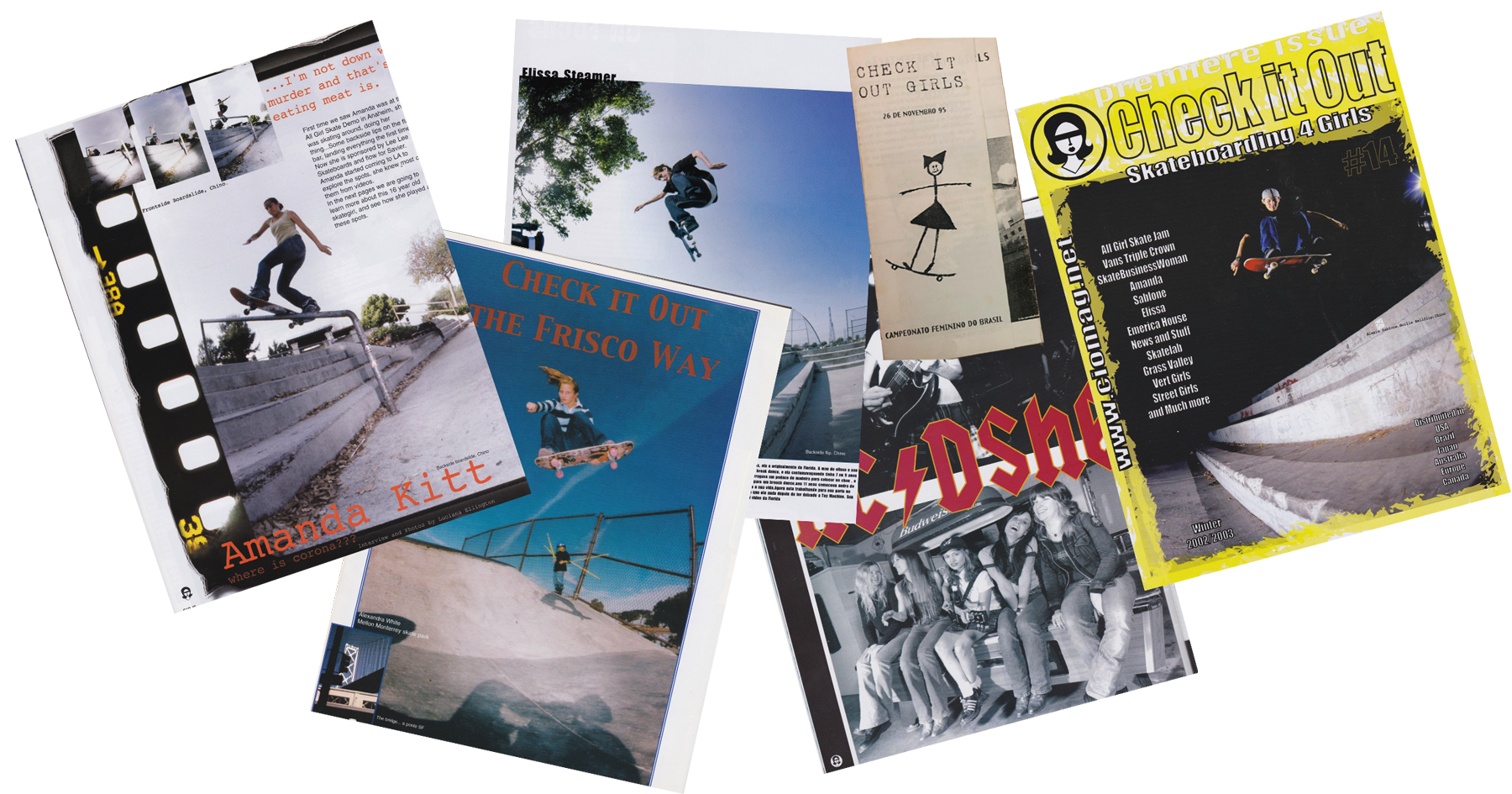
Some time ago, while working on a series of interviews about creating new spaces in skate media, we learned of a women’s run skateboarding magazine that was around from the mid-’90s to mid-’00s. It was the first of its kind, and like many skaters, we’d never heard of it or seen it before.
The magazine was called Check It Out and it offered a rare look at non-male-centered skateboarding that before then had little coverage of its own.
So to get the whole story on this pioneering publication, where it came from and what happened to it, we linked up with Alex White, a prominent figure in women’s skating who was also once featured on the magazine’s cover, and talked with the two main people behind the publication, Liza Araujo and Luciana Ellington.
“check it out” issue #13
Liza grew up skating in São Paulo, Brazil. In 1995, she was working at Tribo, a skateboard mag from Brazil that started in 1991 and is still around today. Liza worked in the mailroom and would see letters from readers, some from girls addressing a kind of rampant sexism they couldn’t escape in skating.
“I got to read a lot letters from girls complaining about the lack of support and discrimination every time they got to a skatepark or spot, or even buying a board at the shop, always a sexist joke,” Liza said. “They wanted to skate and have fun with their friends, but they had to be tough to tolerate the jokes, and that would limit their progress. A platform for their voices had to be created.”
So Liza started Check It Out later that year, assembling the pages by hand and scanning and printing black and white copies on a Xerox machine. To publicize the new ‘zine, she organized an all girl’s contest at ZN skatepark in São Paulo, which at the time was one of the first Brazilian skate contests to include women.
And to make sure they had a good turnout, Liza got big names in Brazilian skating — Bob Burnquist, Nilton Neves, and Marcio Tarobinha — to put on a best trick contest at the event. “I did a best trick with them to validate that contest to those kids who hated women’s skateboarding,” Liza said. “I wanted to change their perspective. Because girls were getting beat up at the skatepark. They would get their boards taken, they would get cursed out, they would be discriminated as groupies, as lesbians. No respect at all.”
In the end, 15 girls skated the event. For Liza, that was a success.
During this time another woman skateboarder in Brazil, Luciana Toledo, was printing her own ‘zine and shooting photos for two of Brazil’s biggest skateboard magazines, Tribo and 100%. Luci met Liza and started shooting photos for Check It Out, and soon became one of their main photographers, along with Ana Paula Negrao.
Over the next three years, Liza, Luci, Ana, and their contributors produced a couple more issues of Check It Out, all printed in black and white and entirely in Portuguese. The magazine featured interviews, travel articles, product reviews, and a bunch of other segments. They also had their own Skater of the Year, which Elissa Steamer won thrice.
Their logo — a blindfolded woman — was meant to be a message for readers to “open their eyes and accept girl’s skateboarding,” Liza said. Years later, Liza, Luci, and Ana got the logo tattooed on their ankles.
Men appeared in Check It Out in occasional ads and photo spreads, but they were also featured through a segment called “Mr. Style.” Readers would vote on which guys were the best looking or had the best skating style, then they would get a short interview in the mag. Andrew Reynolds, Stevie Williams, Clint Peterson, and Dustin Dollin were some of the men to be named Mr. Style.
However, the magazine’s focus was on uplifting and promoting young girls, even those who weren’t sponsored. They of course wanted to showcase the best women in skating, but if they could help underappreciated women get sponsored too, that was a win-win.
“We wanted to find more support for female skateboarders,” Luci said. “It was a different time, not all the girls skated like Elissa Steamer or Jaime Reyes. Those were the girls that actually had a space in magazines like Transworld, Big Brother, or Thrasher. We wanted to feature girls with all abilities, because that’s how we can push ourselves to the next level, when we feel supported.”
Alongside the magazine, they worked to grow women’s skateboarding by organizing women’s divisions at already existing skate contests. But it was an uphill push.
Liza and the other women at Check It Out would have to not only find and assemble girls to skate, but also provide the prize money and trophies. They drove all around Brazil, sleeping under ramps when they had nowhere to stay and sometimes getting booed at contests. Once, a judge drew a hairdryer on his scoreboard and waved it at the women to tell them to go home and do their hair instead of skate.
As discouraging as this open discrimination was, Liza never let it get to her. And eventually it started to pay off.
Check It Out got featured in the ‘zine sections of Thrasher and Slap, and after getting letters from U.S. readers requesting subscriptions, Liza started printing bilingual copies. Every page with text on it had captions in both Portuguese and English.
In 1999, Liza went to California for the All Girls Skate Jam, a new all-women’s contest series, and met the series’ founder, Patty Segovia. Patty talked to Liza about expanding Check It Out’s reach, and pretty soon Liza, Luci, and Ana moved to Encinitas, CA and found an office space near Hollywood High.
“check it out” issue #14
After relocating to the center of the skate industry, they stepped up from a black and white ‘zine to a thicker, full-color, glossy magazine and started running ads with major skate brands like Etnies, Billabong, Element, Baker, Krew and Osiris. They not only featured the biggest names in women’s skating — Vanessa Torres, Lacey Baker, Marisa Dal Santo, Alexis Sablone, and more — but they started working with other established skate photographers. Michael Burnett, current editor-in-chief of Thrasher, and Atiba Jefferson both shot covers for Check It Out.
Around this time Luci met her now ex-husband, Erik Ellington. “He was a big supporter of Check It Out. Correcting our English, helping with layout, having a lot of patience with me bringing girls from other states to stay with us for weeks and weeks,” Luci said.
Liza was also proud of how far they had taken the magazine.“Even with many grammatical errors, people still subscribed and respected our ambition. It was definitely a pretentious project, to move to another country and create something to reach out globally, and in English, which wasn’t our first language. I look at the mags today and laugh at my spelling, but at the same time I wish I had the same guts to take risks today as I had back then.”
Alex White, a skateboarder who is now petitioning to be an announcer for skateboarding at the Olympics, skated with the women at Check It Out and eventually earned a cover photo ollieing the Hollywood High 12 stair. Alex remembers her time with Liza and Luci fondly:
“They were so passionate about the teeny tiny girl’s scene back then, constantly using their contacts with the guy’s side to promote the girls. I remember Liza yanking me into a conversation with Tony Mag[nusson] of Osiris, [saying,] ‘She’s one of the top five girl skaters right now and she doesn’t get shoes. You HAVE to sponsor her.’”
“In this day and age it feels like everyone is out to gain something,” Alex said. “Check It Out was pure love and passion to get the girl’s scene recognized. It was a really special time in skateboarding. The fashion, the tricks, the media. Check It Out is like a time capsule for the early 2000’s skate scene.”
Vanessa Torres looks back on the Check It Out days with great admiration as well. “Some of the fondest memories I have of my adolescence are from running around with the Check It Out crew,” she said. “This magazine meant the world to me. It gave all women [and] young girls an insight to what was going on in the women’s scene. A chance to be a part of something truly authentic. All of these women continue to inspire me and I am eternally grateful to know all of them.”
Yet for all the magazine’s success, it struggled financially. To cover the new production and shipping costs, since they printed it in Brazil but shipped copies to the U.S. (it was cheaper than printing in the U.S.), they had to put in a lot of their own money and regularly used their own cars to pick up orders of 20,000 issues from LAX airport.
They signed a distribution deal with Ingram Periodicals, which put Check It Out in mainstream newsstands at places like Barnes and Noble and Tower Records, but even with that wider reach they weren’t profitable. Frequently, they went through the frustrating experience of Ingram burning stacks of unsold issues.
In 2007, when economies around the world started taking a downturn, many skate brands responded by trimming or eliminating their marketing budgets for women’s skateboarding. This cut into Check It Out’s ad revenue, and later that year they ceased publication entirely. Although online skate content was growing at that time, Liza said they didn’t try to move the mag online because they thought Girls Skate Network, run by Lisa Whitaker, was already doing a good job covering women’s skating.
“I still think issue 19 could have been our best work because it had a lot more girls around the world submitting pics and Leticia Bufoni was on the cover,” Liza said. “Unfortunately, that issue never got printed. I still have the book though, and hoped I could print it someday.”
Although there are now publications like Skateism and The Skate Witches that present more women’s coverage, and women’s contests are definitely much bigger and more lucrative than when Liza launched her mag, there’s still many more stories to be told from outside the male-focused center of skateboarding. The fact that more people, myself included, had never even heard of Check It Out, speaks to the wealth of overlooked skate history.
“Back in the day we just wanted to be able to skate the park without being discriminated, bullied, and attacked by boys,” Liza said. “Now, there’s tons of girl skateboarders with their crews skating all over, because there’s so much more support and inspiration. Big advertisers took a long time to pay attention to women’s skateboarding, but the evolution brought this revolution and I’m glad we contributed.”
Related Posts
Comments
Popular
-
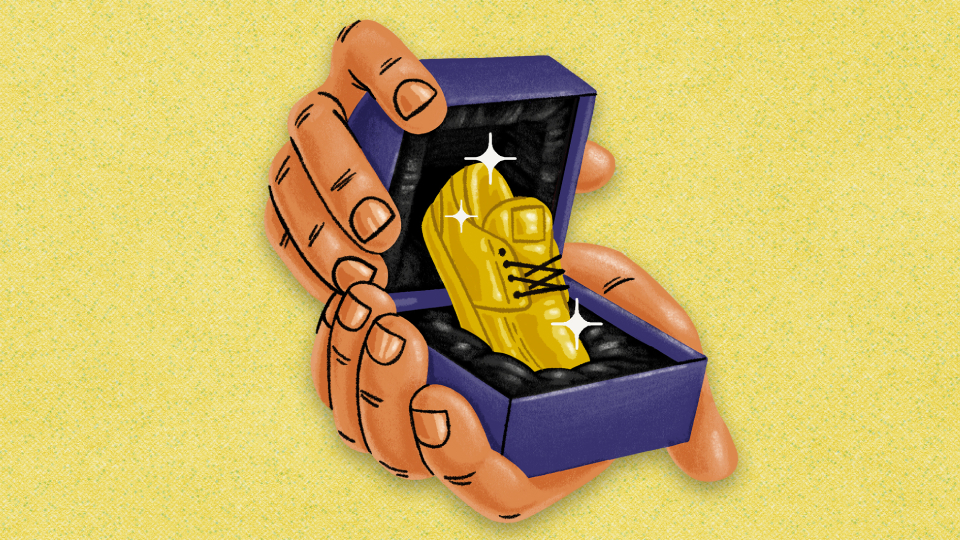 THE RISE AND FALL OF PRO MODEL SKATE SHOES
THE RISE AND FALL OF PRO MODEL SKATE SHOES
While there are still some exceptions, the signature shoe has largely evaporated from the skateboard industry. But, why?
-
 A CHAT WITH LUDVIG HAKANSSON, THE OLDEST SOUL IN SKATEBOARDING
A CHAT WITH LUDVIG HAKANSSON, THE OLDEST SOUL IN SKATEBOARDING
The man loves to read Nietzche, skates in some expensive vintage gear, and paints in his own neoclassical-meets-abstract-expressionist style.
-
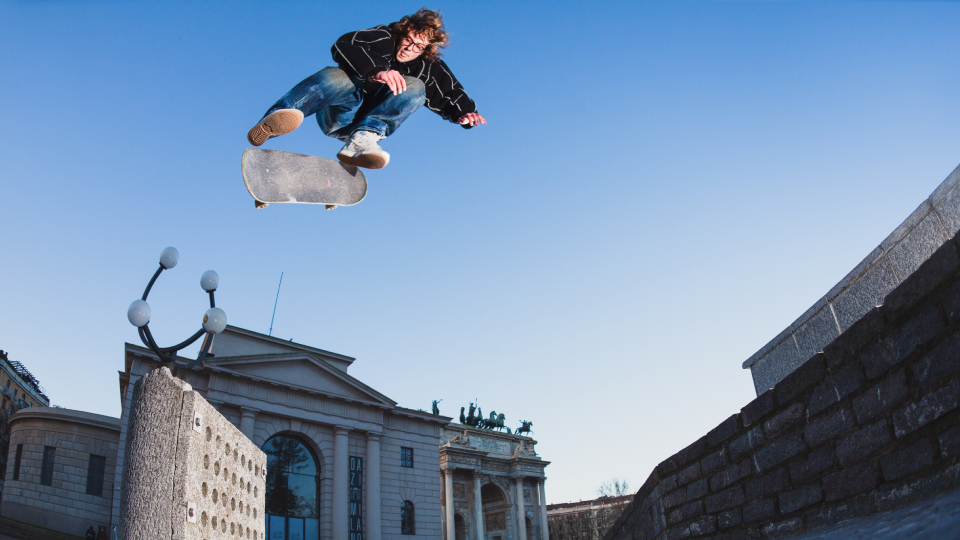 A LOOK THROUGH THE GLASSES OF VINCE PALMER, AKA CHICKEN LITTLE
A LOOK THROUGH THE GLASSES OF VINCE PALMER, AKA CHICKEN LITTLE
Get to know the 18-year-old German repping Baker and Supreme in Milan.
-
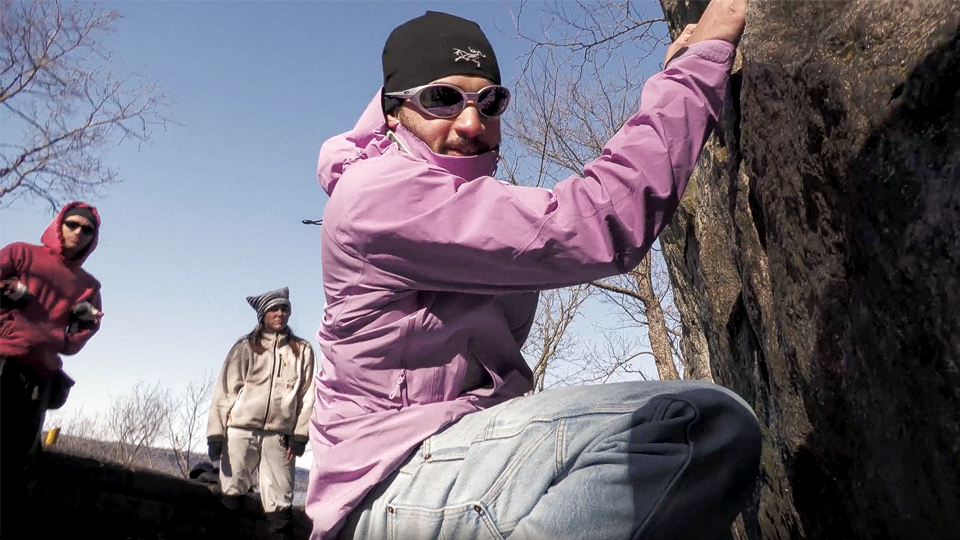 WHO ARE THE SKATERS RESURRECTING ROCK CLIMBING IN UPPER MANHATTAN?
WHO ARE THE SKATERS RESURRECTING ROCK CLIMBING IN UPPER MANHATTAN?
We met up with Joel Popoteur, an employee at Supreme and long-time skater to learn about his outdoor movement.
-
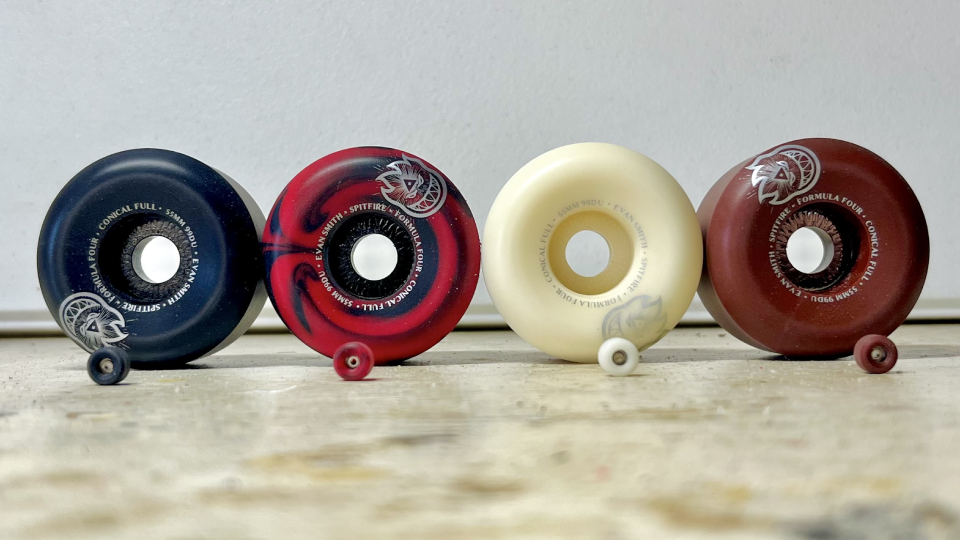 GOT OLD WHEELS? THIS GUY IS MAKING MINI FINGERBOARD REPLICAS WITH THEM
GOT OLD WHEELS? THIS GUY IS MAKING MINI FINGERBOARD REPLICAS WITH THEM
Honey, I Shrunk The Spitfires.

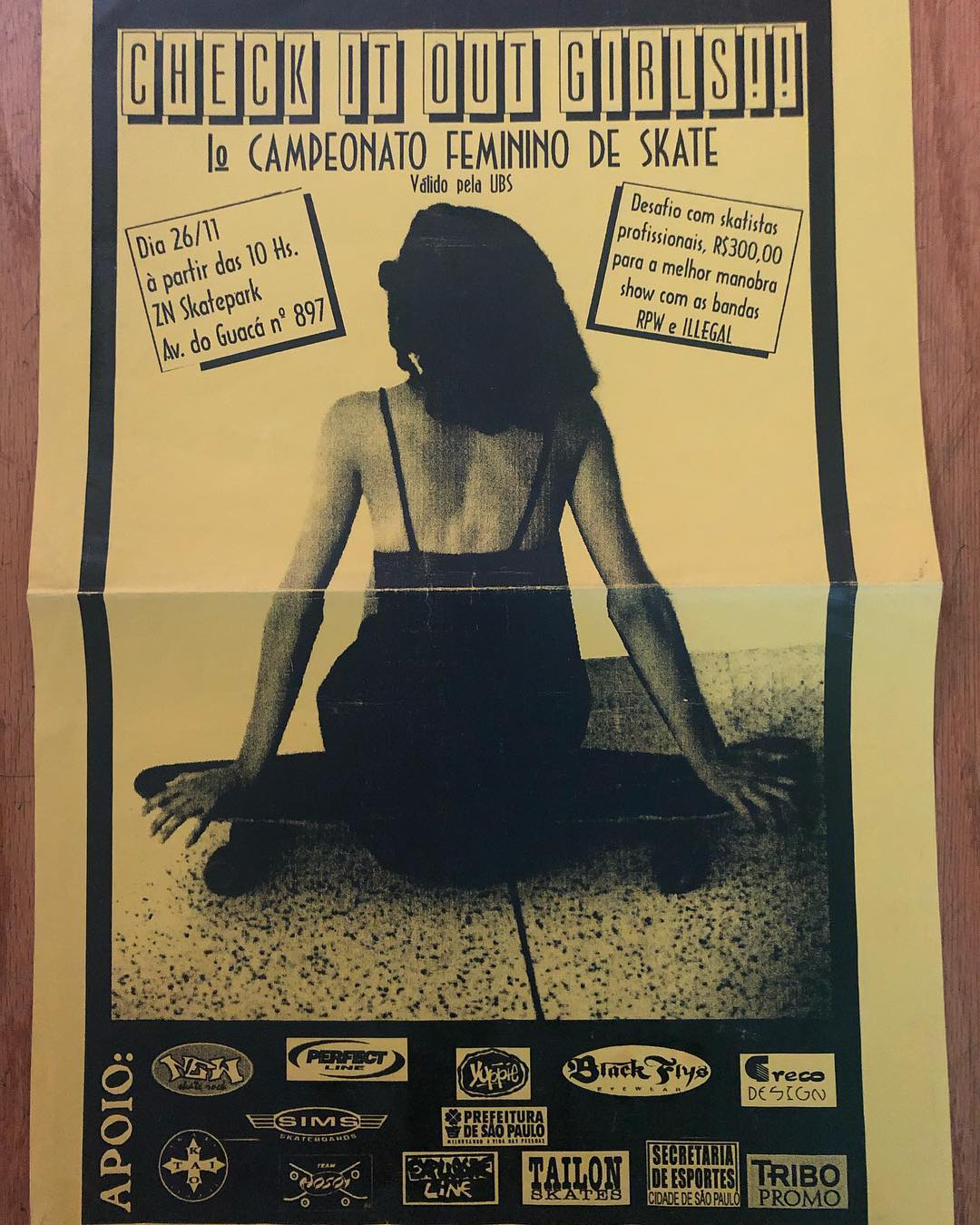
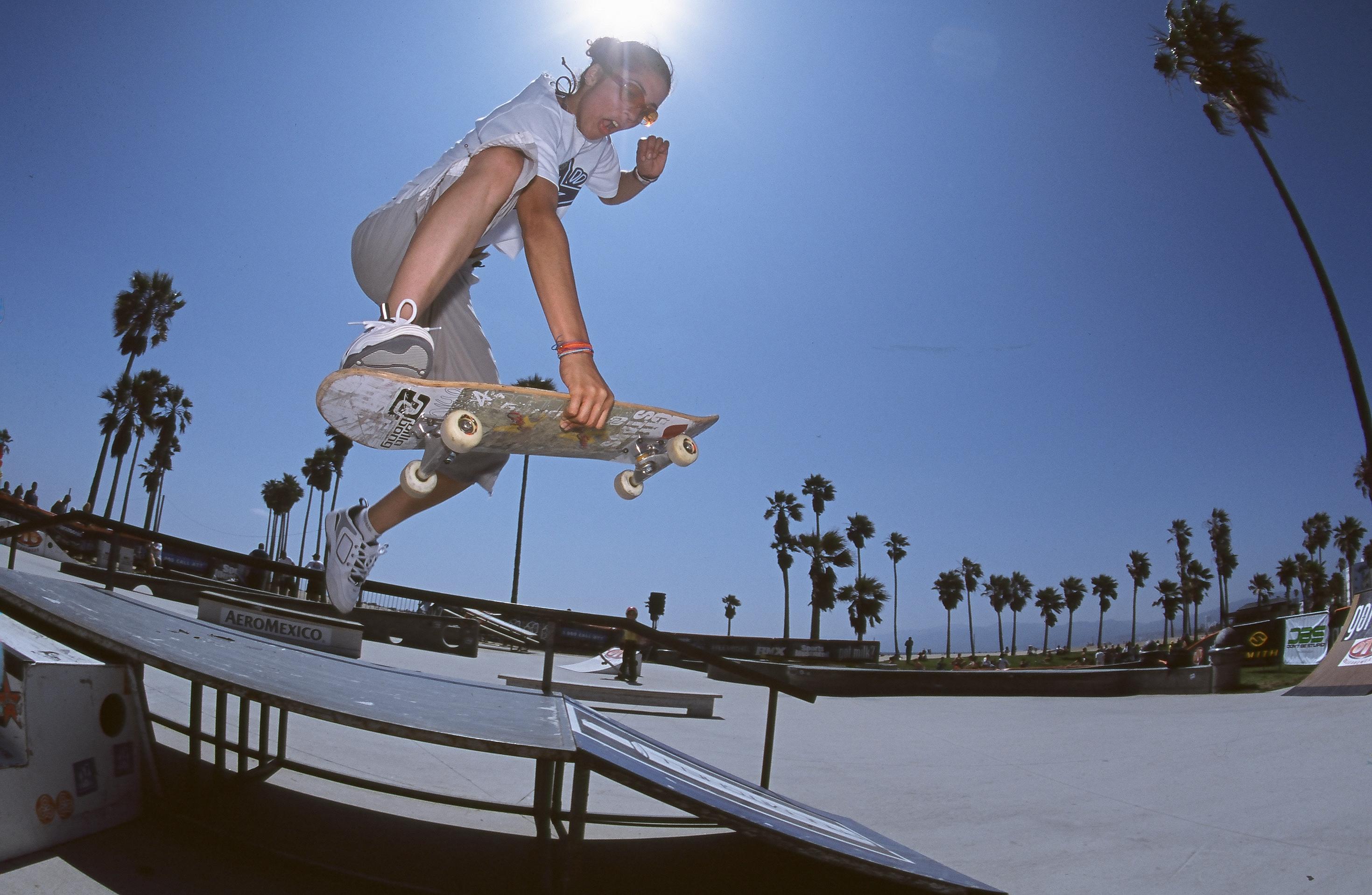
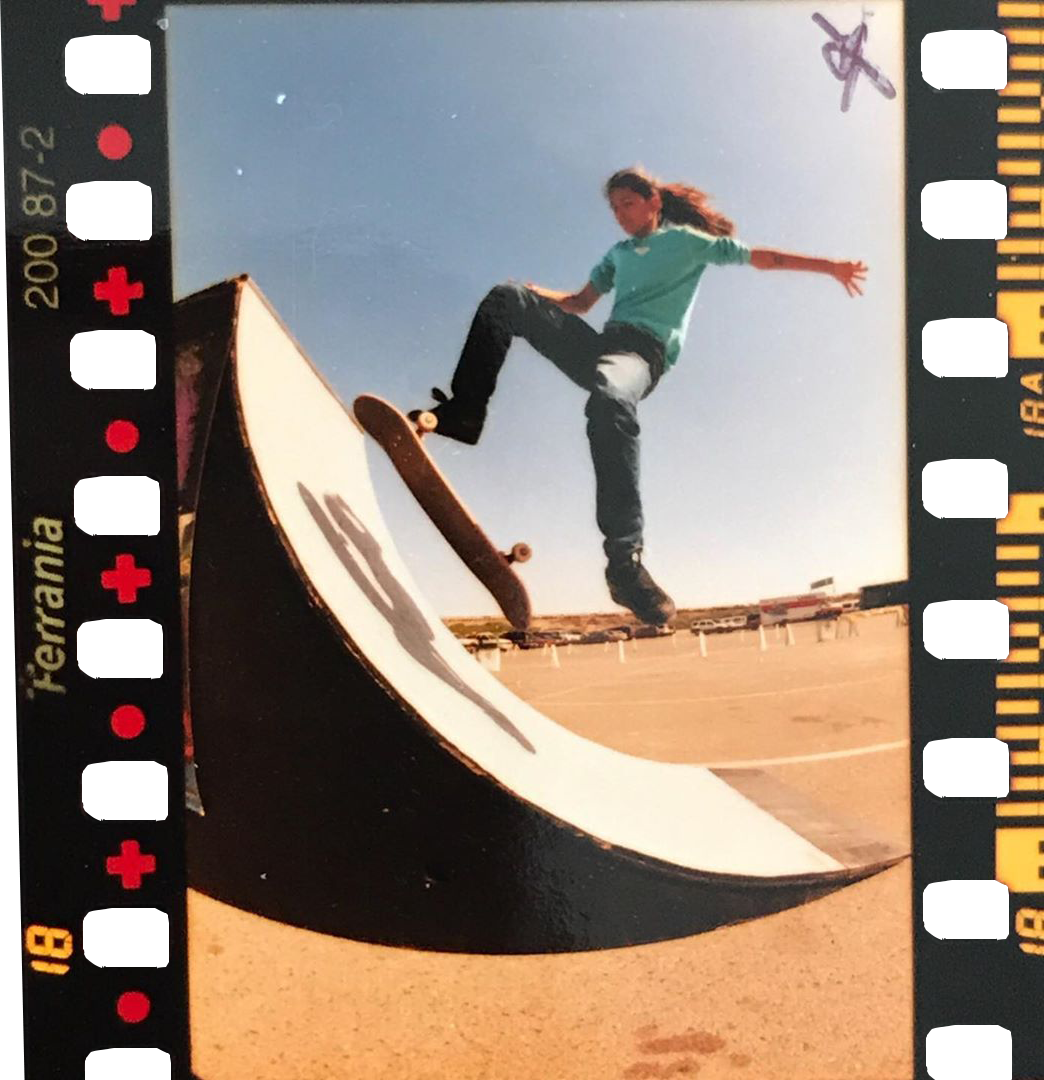
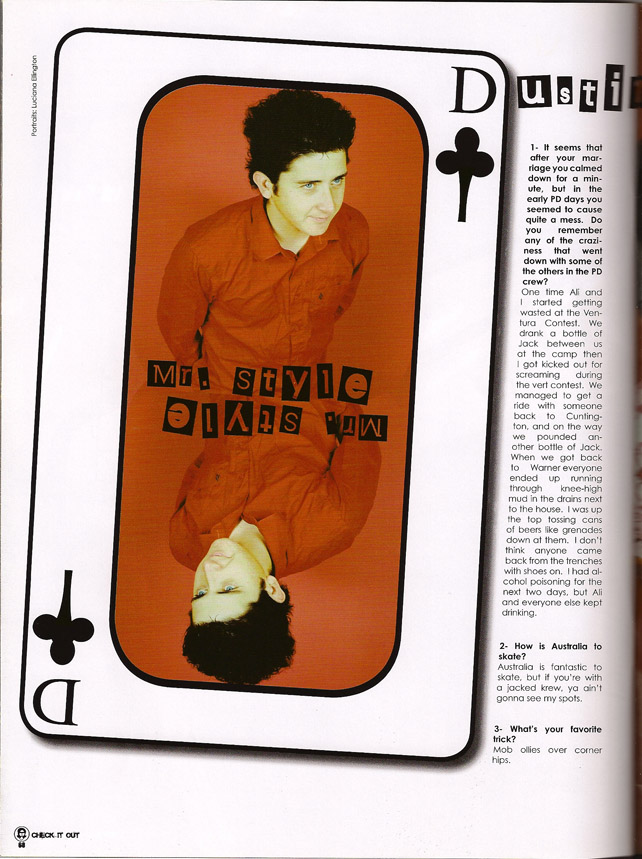
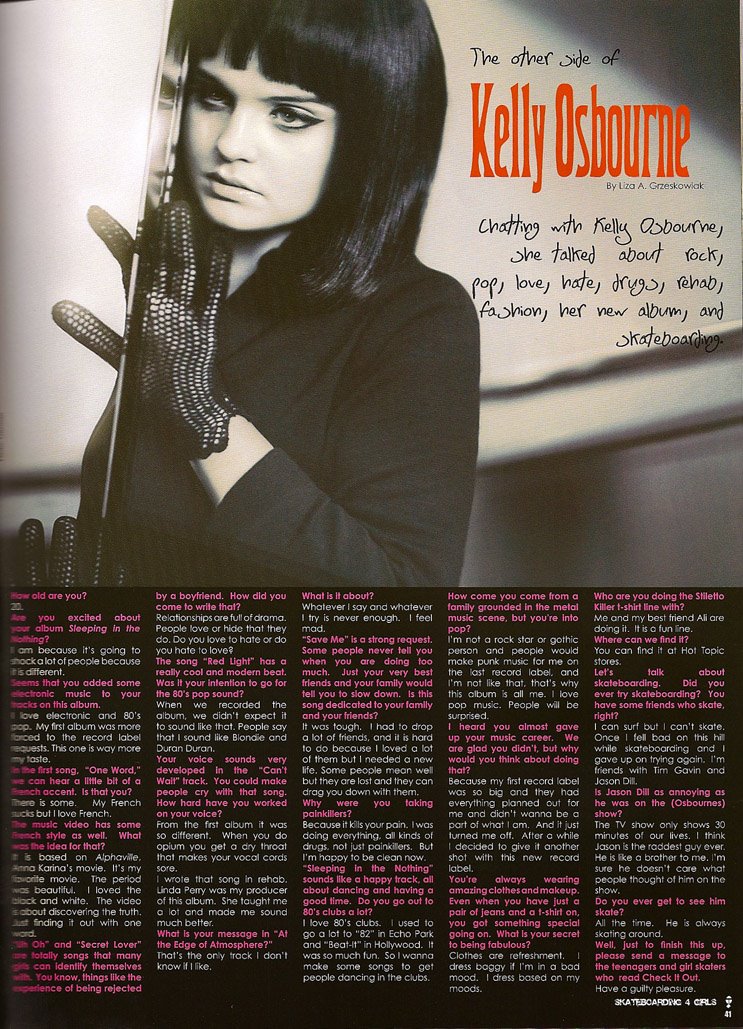
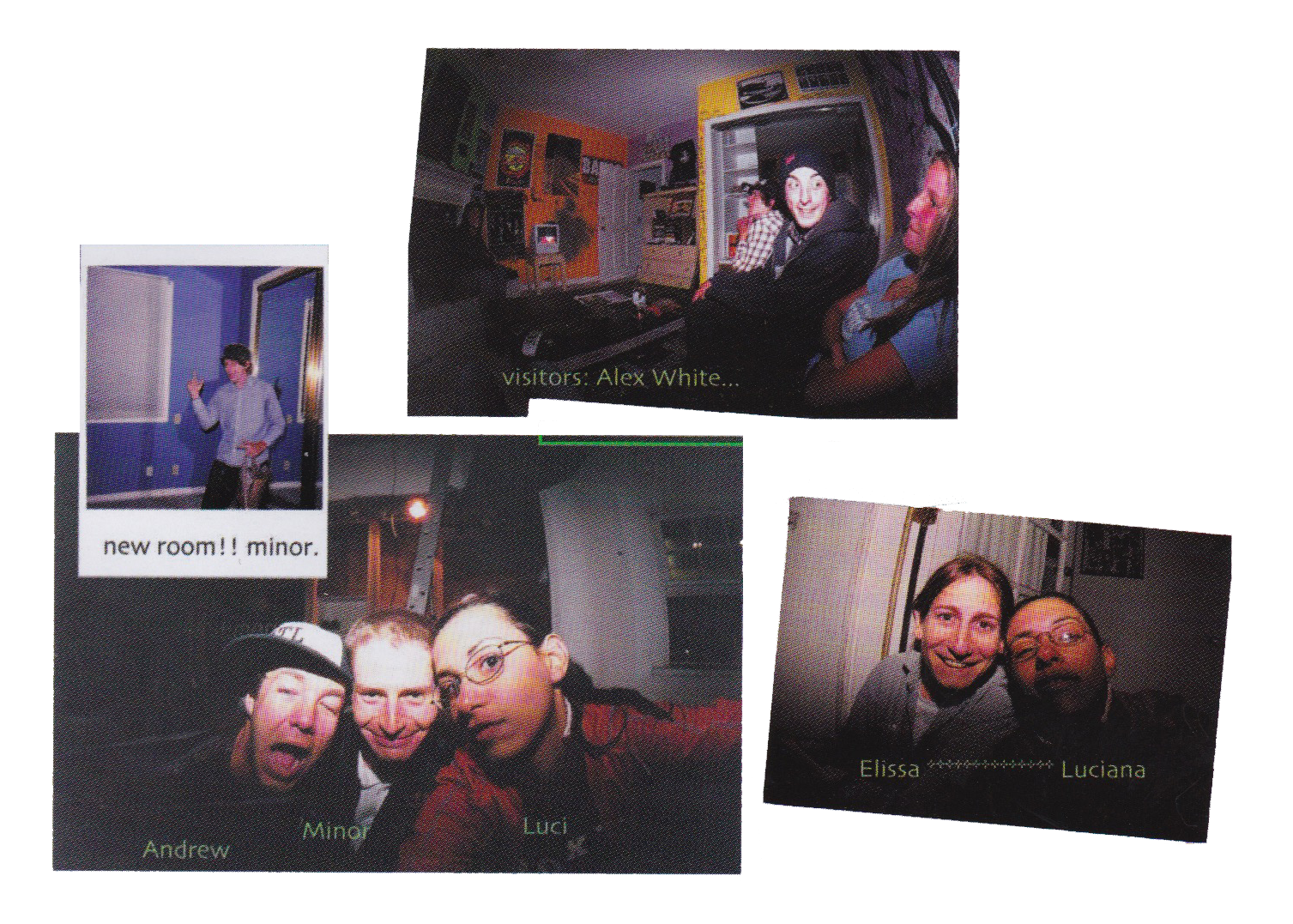
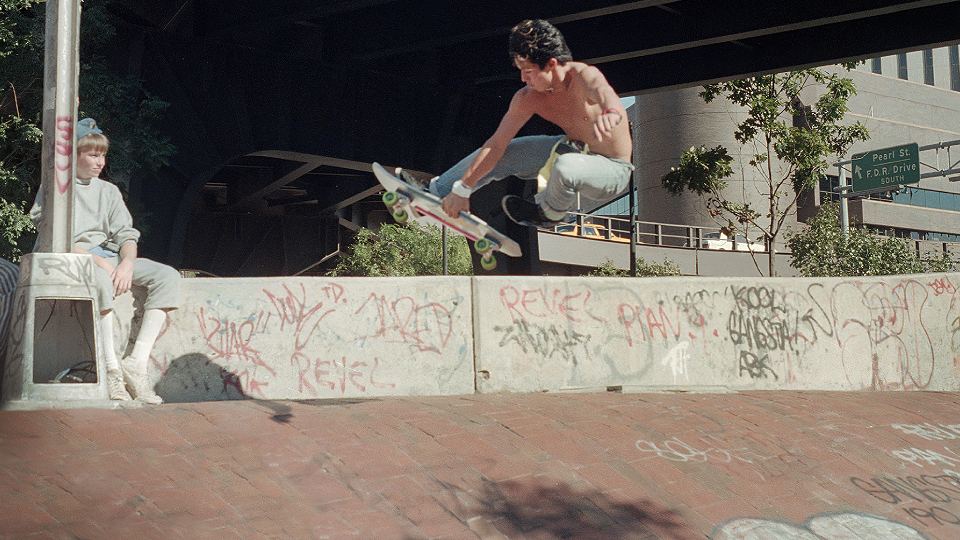


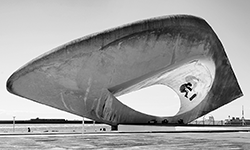

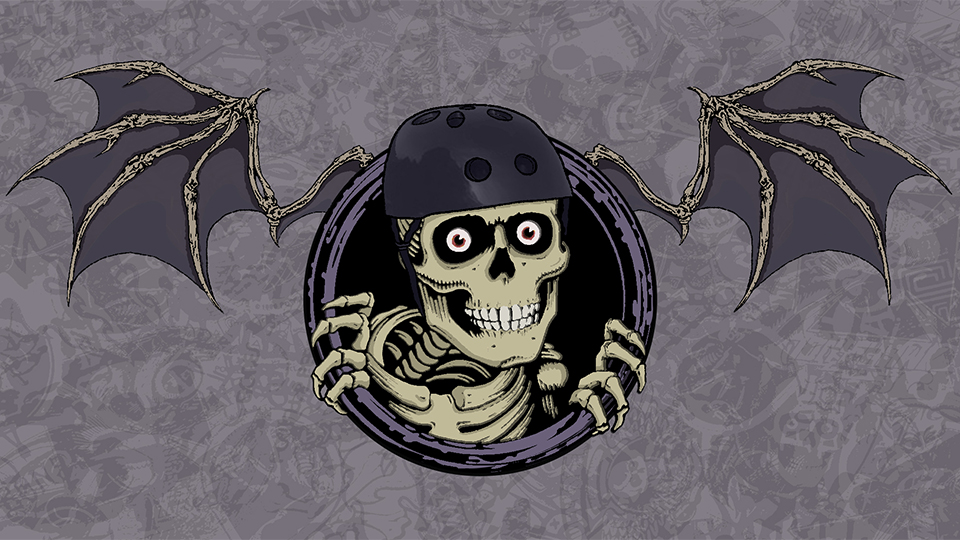
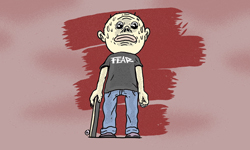
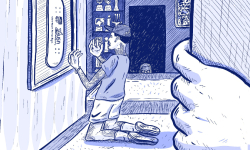
June 10, 2019 1:21 pm
I really want to dive into this, but it’s a lot. And I’m glad it’s a lot! The promo video just kind of stopped in the middle of what was probably more. More later.
June 10, 2019 3:33 pm
One comment!? No one cares about this woman stuff stop pushing it you joos.
June 13, 2019 2:34 am
Ahahahahha amazing comment! Very productive!
June 11, 2019 12:59 am
SO SICK THANKS JENKEM !!!
June 11, 2019 1:03 am
uh…infantile anti-Semitism? “cool”.
please keep up with these sorts of non-mainstream skate audiences. this is rad!